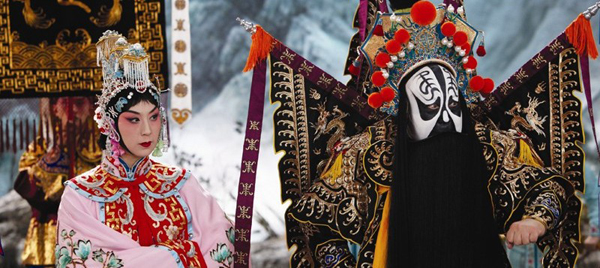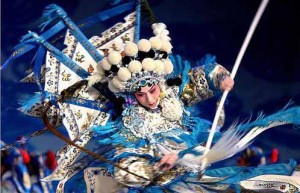Peking Opera is the most popular and influential type of stage performance in China. It is named Peking (Beijing) Opera because it emerged and became popular in Beijing. However, it was originally adapted from a style of opera known as Hui Opera.
The History of Peking Opera:
In 1970, the Qing Emperor Qianlong (1736-1795) celebrated his 80th birthday. He summoned opera troupes from all over China to entertain him on this special occasion. Four famous troupes from the Huizhou district (in what is now Anhui province) remained in Beijing after his birthday performance. The vigorous tunes and crystal clear notes associated with Hui Opera gradually made it more popular and it eventually replaced Kunqu Opera, which had once been popular in the palace and among the upper class citizens of Beijing. In 1828, a troupe from Hubei came to Beijing and often performed with these troupes from Anhui. Their two different styles of opera eventually blended together and gradually created a whole new genre, which came to be known as Peking Opera.
In the early 20th century, Peking Opera enjoyed its period of greatest success. Millions of people flocked to the opera house every year. In fact, Mei Lanfang (1894-1961) is still regarded as the most famous Peking Opera performer in Chinese history.
Key Features of Peking Opera:
The variations of rhythm and pitch in Peking Opera’s singing enable the performer to express their thoughts and emotions clearly. The dialogue in the opera is either in standard spoken Chinese, or in a special dialect used only in music. Both styles of dialogue are now not easy to follow for anyone who is not familiar with this style of opera.
The archetypal characters in Peking Opera are finely differentiated according to disposition and age. Female characters are called dan, male characters are sheng, clowns are chou, and cruel or sinister characters are jing or hualian. These differing types of characters are all distinguished using different face make-up. Audiences know what kind of character is being portrayed from the colours on the actor’s face. For instance, the colour red represents loyalty and courage, yellow signifies fierceness, white is used to represent villainy and black symbolises honesty and straightforwardness.
String and wind instruments are used in the musical accompaniment to a Peking Opera. Percussion instruments, such as gongs, drums and castanets made of padauk wood or bamboo, are also necessary for the performance. The most important string instrument is called the jinghu, which is closely followed by the erhu. Plucked string instruments like the yueqin are also important.

